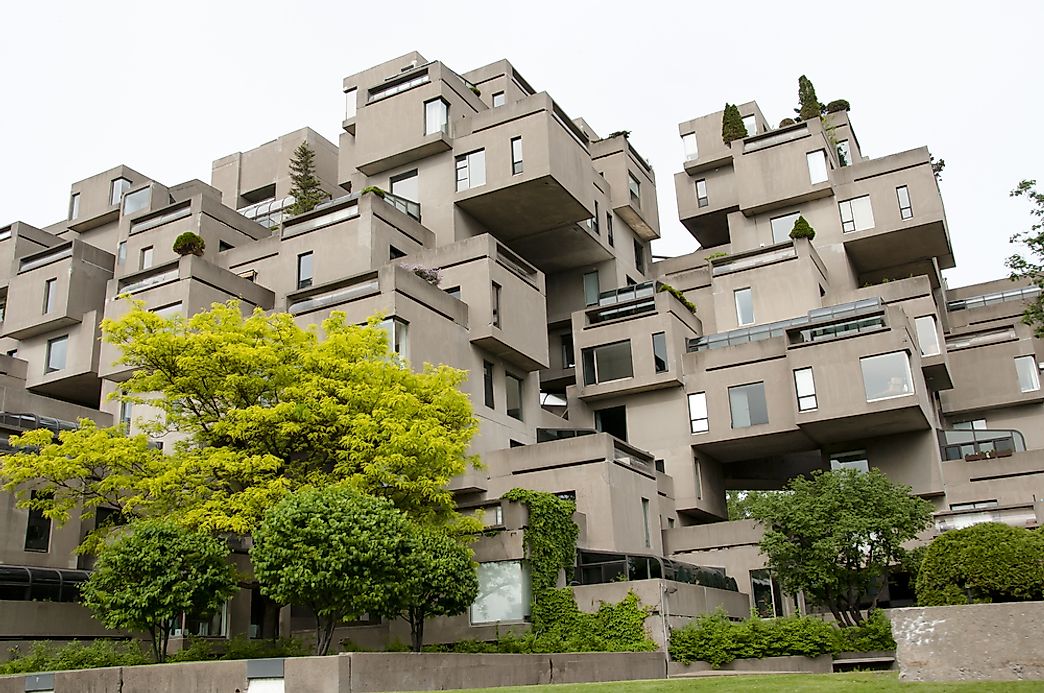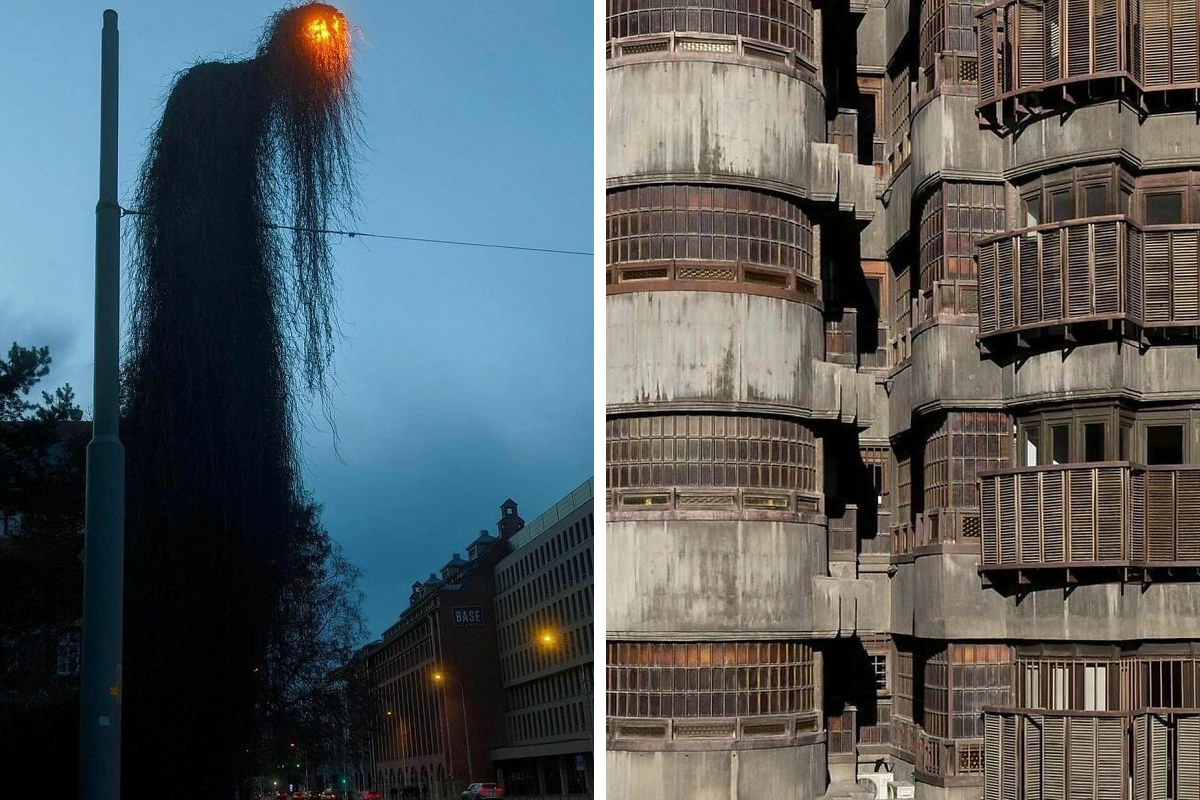Table Of Content

The concept of "streets in the sky" was an architectural feature of Brutalism that became popular in the 1960s, involving the use of elevated walkways connecting raised apartment buildings to create a sense of neighborhood. An early example of their use was in the Smithsons' design for Golden Lane Estate (1952), an unbuilt project, which became the model for their Robin Hood Gardens in London ( ). With the publication of his essay "The New Brutalism" (1955), the architectural critic and historian Reyner Banham became the leading theorist and advocate of the Brutalist movement. The essay defined the historical context for Brutalism, describing the movement as influenced by Le Corbusier's béton brut, Jean Dubuffet's Art Brut, and the French musician Pierre Schaeffer's "musique concrète" ('concrete music') of the 1940s. “Brutalist design often features bold geometric shapes and strong imposing silhouettes,” says Watts.
Peruse an Updated Library in a Brutalist Build - Interior Design
Peruse an Updated Library in a Brutalist Build.
Posted: Wed, 10 Jan 2024 08:00:00 GMT [source]
The Barbican Centre – London, England
The country must rebuild and do so quickly in order to provide housing for the displaced and government buildings to reestablish order. On top of all of this, there is a shortage of materials thanks to a years-long war effort. The reason why brutalism has been able to jump between such wildly different design disciplines is that it tends to describe more of a mindset than visual characteristics. Brutalism is an architectural style characterized by a deliberate plainness, crudity, and transparency that can often be interpreted as austere and menacing. It emerged in the mid-20th century and gained popularity in the late 1950s and 1960s.
London, England
RentCafe’s Biggest Design Styles for 2024 Include Brutalism - Apartment Therapy
RentCafe’s Biggest Design Styles for 2024 Include Brutalism.
Posted: Sat, 03 Feb 2024 08:00:00 GMT [source]
Béton brut is a French term that translates literally to “raw concrete” and is also used to describe the iconic aesthetic known as Brutalist architecture. Geometric shapes, bulky materials, neutral tones, and unpolished and raw materials are all primary characteristics of the design. Growing up in Venezuela, architect Maurizio Bianchi Mattioli of Studio MBM was surrounded by brutalist buildings; now based in New York, he finds himself regularly weaving its elements into his projects. In a recent Manhattan loft project, for example, he crafted a sink with boxy stone inserts and a giant partition separates the vanities, while a cast-iron column acts as a kind of found object within the space. Outside of Park City, Utah, Mattioli is also working on a mountain home with a wedged roof and a pared-back interior with concrete floors. Like Frazen, Mattioli makes clear that his work is not a carbon copy of the 1950s movement nor does it have any political agenda.
The 24 Most Beautiful Brutalist Buildings in the World
The brutalist Smithson Tower in Mayfair is the location for this "homely" office designed by ConForm Architects. The studio split the space into eight zones defined by the strong structural grid of the existing building, and added low-level joinery. The Smithsons made a bigger plan with more buildings that go together well.
Collcoll hides stairs and seats in pixellated wooden structure at Pricefx office

(Owens, by the way, has his own brutalist-style home in Concordia, Italy.) Concrete floors too are often microtopped—or covered with a coating that gives them an elegant sheen. Fast forward to 2023, however, and brutalism is making a serious comeback. In the Oscar-nominated Tár, a brutalist Berlin apartment gathered just as much audience intrigue as Cate Blanchett character of Lydia. When Vogue published its annual interior-design trend report, multiple designers noted they’d seen an uptick in its signature stark hallmarks, such as concrete floors and the use of raw industrial materials. One designer, Colin King, explained he had used everything from exposed bulbs and pipes to materials like bronze, plywood, and cement in recent projects. “I have historically been impacted most by [architectural features] that feel monolithic—I want stuff to be big, strong, and silent,” he says.
Top interiors stories
After time labeled many brutalist interiors and structures as, well, ugly and cold, their new iterations in 2023 juxtapose these elements with organic accents. King, for example, complements them with Swedish or Baroque antiques, whereas Frazen planted a tree in the corner of the Khaite store. King and Mattioli also point out that brutalism extends beyond architecture and interiors—a piece of furniture or decor can also bring a more subtle brutalist-inspired touch to a space. Mattioli makes a three-legged steel stool, for example, whereas King has a fondness for working with a Le Corbusier concrete lamp or a Rick Owens bronze table.
Brutalist buildings present several economic challenges due to their distinct design and construction methods. Firstly, the high cost of renovating and repairing exposed concrete is a quintessential brutalist material. Secondly, brutalist buildings’ unconventional shapes and modular construction make renovations complicated and expensive.

The Most Beautiful Brutalist Buildings
Philippe Starck, for instance, showed furniture made in partnership with AI. Working with the Italian furniture maker Kartell, his A.I Lounge and A.I Console use recycled plastic for an interesting dialogue on materials and production. For his personal portfolio website, Ryan uses an extreme version of brutalism. Vibrant colors, large geometric objects and the overuse of flashy photos create a visually striking design.
New Appreciation for Brutalism
Brutalism arose at a period when the large-scale, cheap residential design was desperately needed. The main cities of Europe were brutally bombed and there was a necessity to remove urban squalor, as well as a general desire to alleviate the condition of the average citizen. When Ernő Goldfinger designed London's Trellick Tower, it was intended to replace outdated social housing. Goldfinger's design includes 217 apartments, all of which have balconies. Special touches like sliding doors help save space while large windows give residents access to natural light.
His pioneering work, like the Unité d’Habitation apartment complex in Marseille, France, built in 1952, is considered the beginning of brutalist architecture, using raw, unfinished concrete, modular design, and expressive sculptural forms. Le Corbusier’s buildings embodied the core tenets of brutalism, focusing on functionality and rejecting unnecessary decoration. Other notable brutalist architects like Alison and Peter Smithson in the UK and Paul Rudolph in the US further developed the style in the 1950s and 60s. Le Corbusier first demonstrated the radical creative possibilities of rough concrete, open floor plans, and the blunt, geometric aesthetic that became hallmarks of brutalism. Le Corbusier’s influence shaped the widespread adoption of brutalist architecture for civic and residential buildings in the postwar period. Brutalist architecture emerged in the 1950s as an offshoot of the modernist movement.
Designers often incorporate natural materials like wood and stone to balance the harshness of the concrete. Now with its modernized yet still minimalist approach, however, the style has been reintegrated into homes everywhere today. Its rise in the younger generation too has supported its emergence into social media platforms like Pinterest. Interior designers and artists, like Colin King and Axel Vervoordt, have been known to style brutalist-inspired home spaces with a few modern twists.
They wanted architecture to reflect its real-world aims and materials honestly. This led to an emphasis on rugged unfinished concrete and expressive sculptural forms rather than streamlined facades. The Brutalism definition comes from the material used to create it, not from its brutal appearance. Béton Brut is a French phrase that means raw concrete and is also used to characterize the classic architectural style known as Brutalist. Brutalist design is frequently linked to socialist objectives in 20th-century urban philosophy.
They fit together like a jigsaw puzzle, each piece reflecting its interior function. Areas of public access are located on the ground floor, partially built into a rising fold of land, and employing red brick that blends with the surrounding brick plaza. Like much Brutalist architecture, this bold design represents an update on the famous axiom of architectural modernism that form should follow function. Half of the structure's concrete was precast in steel molds and used darker cement, while the rest was cast in wooden frames onsite.

No comments:
Post a Comment